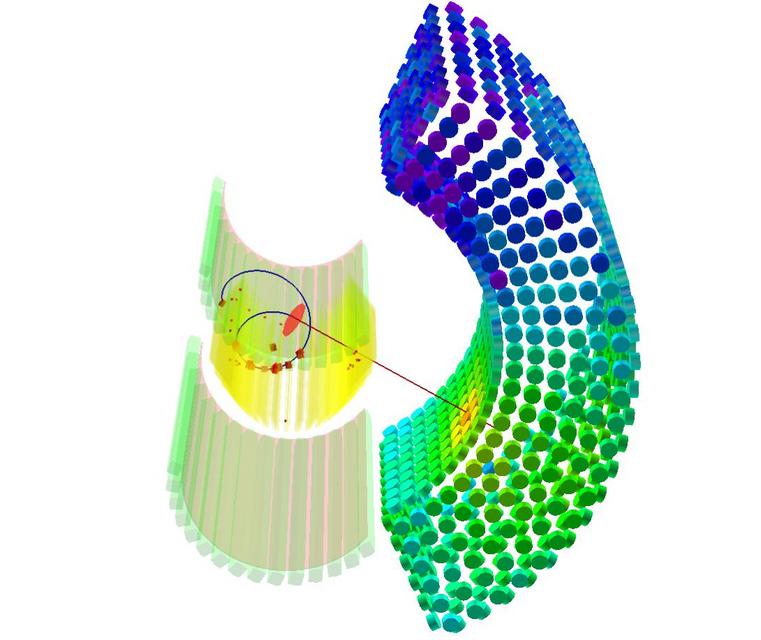The concept of the MEG experiment is very simple: the detector is designed to identify pairs of positrons and photons in time coincidence, emitted back–to–back from the spot of a continuous muons beam stopped in a thin target.
- Figure shows a schematic view of the MEG detector.
The photon energy is measured in a Liquid–Xe scintillating calorimeter, while the positron track is reconstructed in a spectrometer, with inhomogeneous magnetic field. This later consists a cylindrical full stereo drift chambers to measure the positrons momentum, and a timing counter, to measure their time of flight. The solid angle covered by this configuration is about 10%.
The apparatus
- COBRA Magnet that provides the curvature of the positron tracks in the spectrometer;
- Liquid Xe Calorimeter to measure the energy of photons;
- Cylindrical Drift Chamber to measure the energy of the positrons;
- Timing Counter that provides the positrons time;
In parallel other studies on auxiliary devices are being perfomed. Those are:
- a scintillation fiber-based active target (ATAR) that aims at tagging the incoming muons and the decay electrons with excellent position and timing resolutions;
- a radiative muon decay counter (RDC) could also be used to tag low energy positrons associated with the high energy photons in the signal region.
The experimental challenge is the high efficiency and resolutions of the subdetectors needed to reach a sensitivity of 10-14 on the branching ratio (BR), as declared in the experiment proposal.

